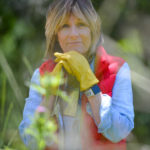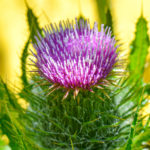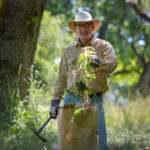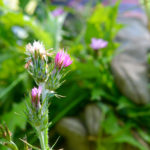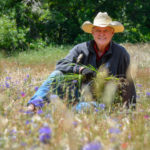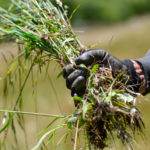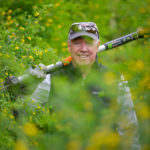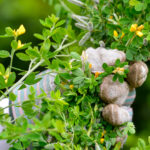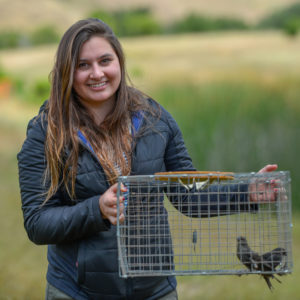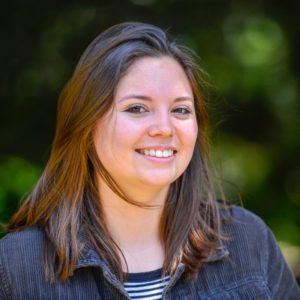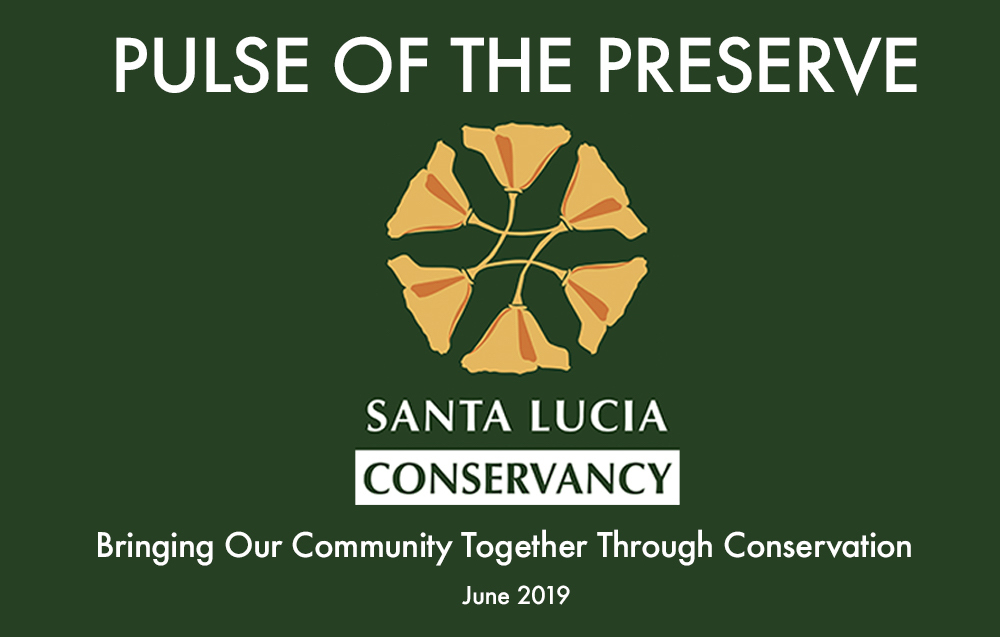
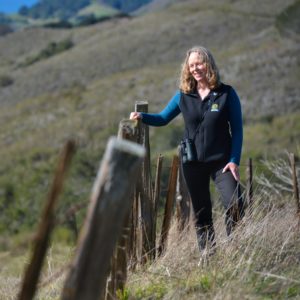 The fragrance of lupin fields and hum of native bees across The Preserve this Spring is a powerful reminder of the resilience of the natural world. Spending a few minutes soaking in the sounds, colors and scents of the season reaffirms what an extraordinary place this truly is. The Preserve lies at the heart of the Central Coast, one of the planet’s great biodiversity hotspots. We are blessed to live within – and help care for – one of only five places on Earth to support a Mediterranean climate. This ecological abundance adds to our lives in many ways. Taking a walk through The Preserve’s wildflower fields, it is easy to be transported to another place and time. With over 400 species of wildflowers alone, there is enough beauty and diversity to keep us enchanted for a lifetime.
The fragrance of lupin fields and hum of native bees across The Preserve this Spring is a powerful reminder of the resilience of the natural world. Spending a few minutes soaking in the sounds, colors and scents of the season reaffirms what an extraordinary place this truly is. The Preserve lies at the heart of the Central Coast, one of the planet’s great biodiversity hotspots. We are blessed to live within – and help care for – one of only five places on Earth to support a Mediterranean climate. This ecological abundance adds to our lives in many ways. Taking a walk through The Preserve’s wildflower fields, it is easy to be transported to another place and time. With over 400 species of wildflowers alone, there is enough beauty and diversity to keep us enchanted for a lifetime.
Day in and day out, the Conservancy team cares for the health of the Wildlands and Openlands, engaging and inspiring the community to connect with the land and lend a hand. Sustaining biodiversity is just one of many benefits of these collaborative efforts. Emerging medical science tells us that spending quality time in natural areas brings countless health benefits, as well as social, spiritual and psychological well-being. Here at The Preserve, it’s not just about nature, it’s about people in nature. The most exciting moments of our day (aside, perhaps from the occasional glimpse of a mountain lion) come from working in partnership with Preserve landowners and staff. Through our shared vision and values we can make a difference and continue to build a thriving conservation community.
The Santa Lucia Preserve’s sweeping grasslands are experiencing a rebirth – tiger salamanders are returning to our ponds and burrowing owls once again harry rodents on Peñon Peak and the Mesa. Wildflowers, native grasses and a broad array of wildlife grace our hills and valleys in higher numbers, and the song of meadowlarks and other grassland birds can be heard from the Potrero to Black Mountain.
This is not by accident. Soon after arriving in the fall of 2011, I asked the Conservancy’s science and stewardship team ‘what keeps you up at night?’ Their answers were swift and concerning: “Our grasslands are becoming overwhelmed with thatch, woody weeds and brush, and we are losing important indicators of ecosystem health, like burrowing owls, golden eagles and tiger salamanders.” I also reached out to Preserve landowners, asking the same question. A similar response was shared: “What’s happened to our scenic vistas? Our rolling hills used to be emerald green in the spring and golden throughout the summer and fall. Now they are grey year-round. Where are our wildflowers? Where are our hawks?”
The scientists and landowners were raising the same alarm, using different words to express a shared concern.
Through 2012 we consulted experts and developed an ambitious plan, and in the spring of 2013, the Conservancy took the first big step toward grassland recovery by launching an innovative Conservation Grazing program with the support of the Community Services District (CSD), Ranch Club and Preserve landowners. We developed a remarkable “portable” system for moving goats and cattle across the landscape to restore natural processes once provided by grass fires and long-lost native grazers. In this initial phase of the program we concentrated on clearing thatch, reinvigorating grassland soils, slowing brush encroachment and preserving picturesque vistas.
Over the past six years we have collected scientific data and monitored the results closely, consulted with regional experts on next steps and observed a resurgence of native grasses, wildflowers and raptors. Today, land managers from across the continent are coming to see the results of our work, quiz our staff and learn from each other. This May, we also shared our findings with Preserve landowners, recognizing their important role in this program and highlighting our continued commitment to our partnerships in grassland recovery.
As exciting as these early results may be, we are just getting started. Weeds and brush encroachment continue to plague our scenic vistas and sensitive habitat areas. Grazing is a valuable tool, but it isn’t the whole solution. It is time to take another big leap forward in this grasslands renaissance: this past January, the Conservancy Board of Governors approved a 5-year, $2,000,000 Grasslands Initiative focused on aggressive weed management and expanded grazing and mowing. Together, we will build on the foundation we’ve created to ensure the recovery of our mutually beloved grasslands.
The Conservancy’s first-ever 5-person seasonal weed crew is taking the fight to the field. In their first three months, the crew has already assessed and treated 350-acres of invasive weeds throughout The Preserve’s grasslands. Our key partners, Preserve landowners, are also stepping up in a big way, with terrific results. Several of these individuals are celebrated in this newsletter.
Our momentum continues to build. So far this year, we’ve initiated nine new Openlands Partnerships with landowners, and more are signing up each month. Conservancy and Preserve staff are also collaborating closely and meet regularly with the CSD and Ranch Club teams to compare notes and coordinate weed management efforts. More broadly, we are partnering with CalFIRE and Monterey Regional Fire District to explore bringing prescribed fire back to The Preserve in 2020 – another powerful tool for habitat recovery and to improve fire-resilience and community safety.
This spring’s regional superbloom is a spectacular wildflower year by any measure. We’re thrilled that our past and current grasslands restoration efforts have allowed us to participate in this lovely natural phenomenon, showcasing our partnerships and how they connect us to each other and to the land. It’s not too late to grab a friend or neighbor and go for a wander through our magnificent grasslands. New wildflowers are still emerging in our grasslands, woodlands and forests. As you soak up the natural beauty and nurture your connection with nature, we hope you feel a sense of peace, wellbeing and renewal. Please continue to share these experiences with us by posting photos, asking questions, and connecting through Instagram, Facebook, and our new website. We love to see and share the benefits of being part of an extraordinary conservation community, here at The Santa Lucia Preserve.
CONSERVATION CHAMPIONS
Inspiration from Our Community
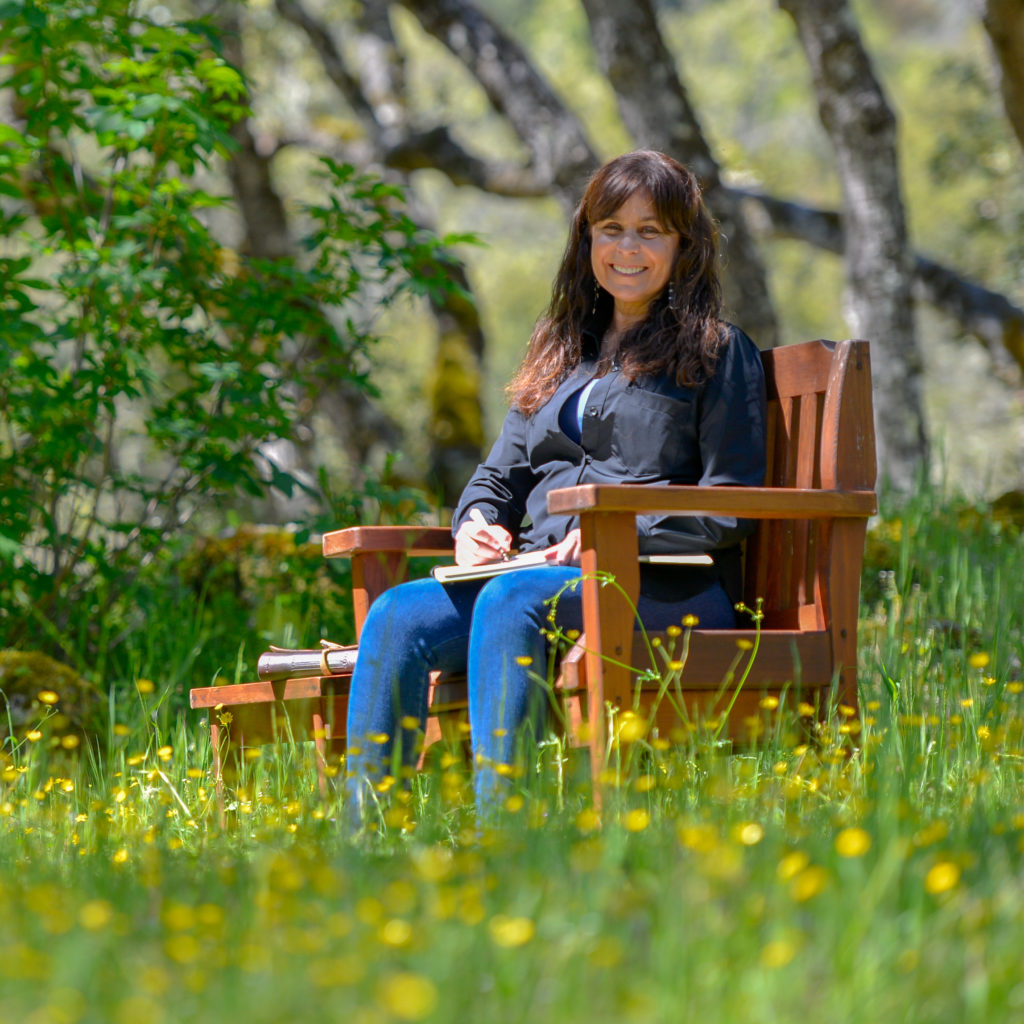
Homegrown and returning to her roots. Read about how one relatively new community member continues to holistically deepen her connection to The Preserve. READ MORE>
WILD PRESERVE
Connections with our Natural Neighbors
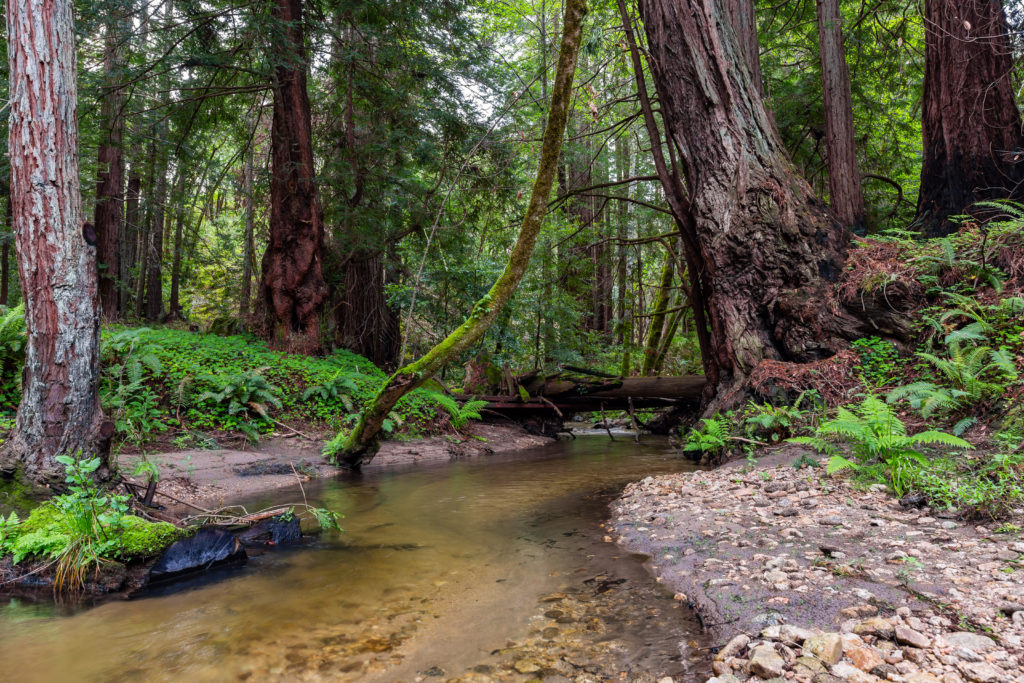
Oh-my-kiss isn’t an affectionate term for a loved one, but shorthand for Oncorhynchus mykiss, also known as the steelhead trout – one of the most remarkable animals on the planet let alone The Preserve. Discover why what we do upstream impacts where my-kisses come from and return to, as well as other recent wildlife encounters on The Preserve. READ MORE>
GRASSLANDS, EXPLAINED
Serenading Santa Lucia Cattle
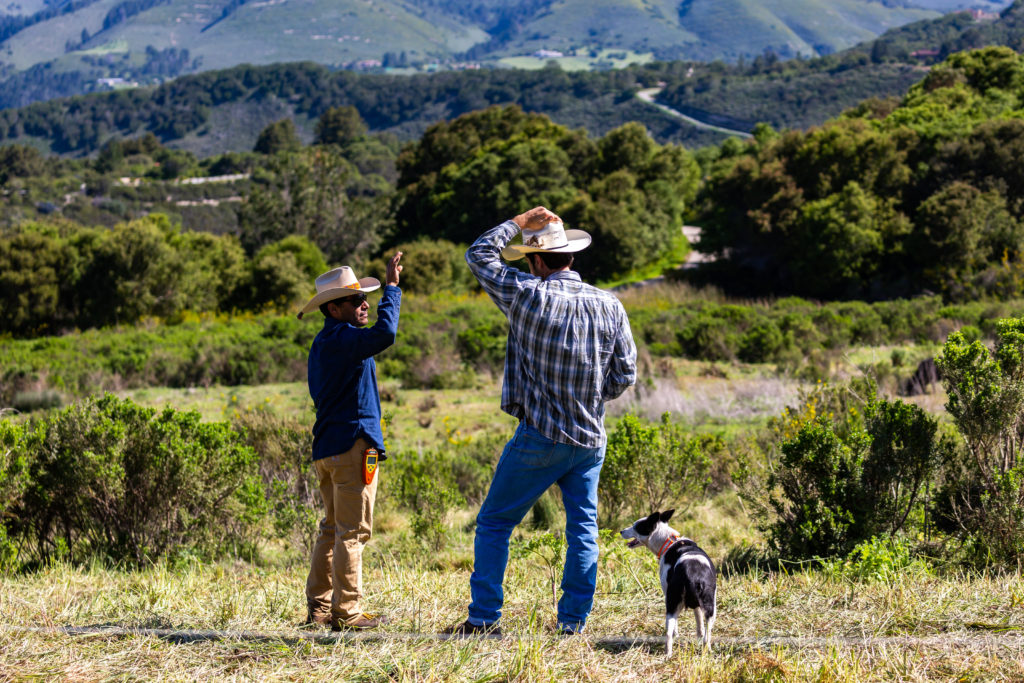
Ever wondered what it’s like to be a cow on The Preserve? With international grassland ecology experience, the Conservancy’s Stewardship Director, Rodrigo Sierra Corona, explains the unique role cattle fill throughout native grasslands and why our cattle enjoy some of the best employee benefits of the team. READ MORE>
INTO THE WEEDS
A Deeper Dive Into The Preserve’s Plant World
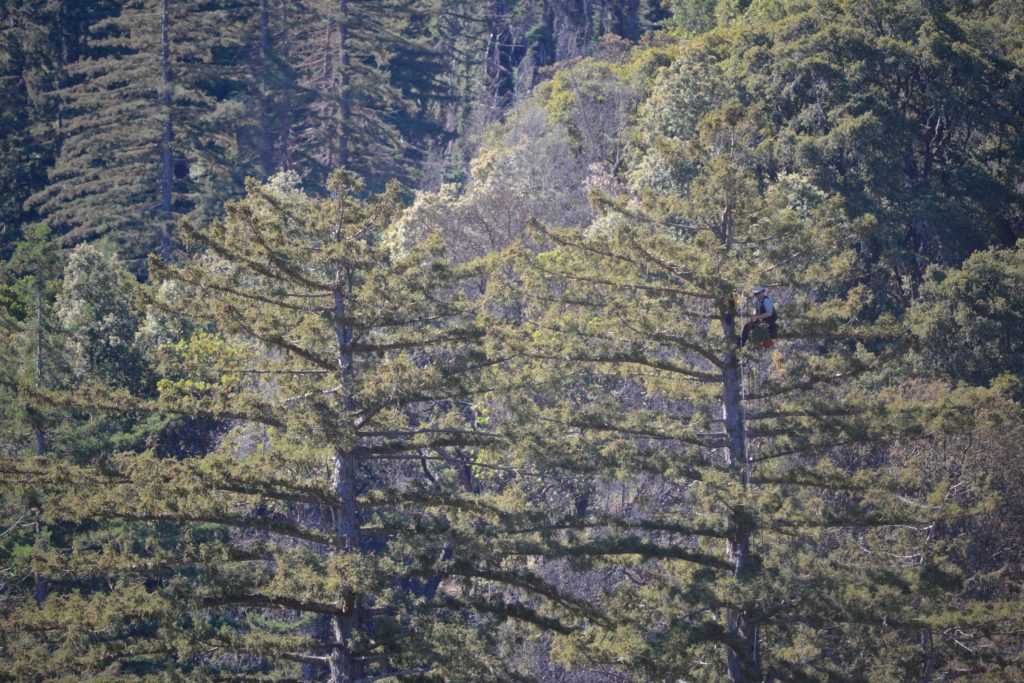
“Redwoods are a living time capsule,” shared world-renowned researcher Steve Sillett. Unlocking their stories is what he and his team of arborists from Humboldt State University do up and down the Western United States, across redwoods native range. Search for Steve in the image above and learn what he discovered about our ancient and beloved redwoods after his first visit to The Preserve in 2018. READ MORE>
GRASSROOTS
Notes from the Field
BY LINDSAY COPE
The Preserve is endowed with some of the last vestiges of native California grasslands. It’s a hope spot within a devastating landscape shift across the western US. Dive into the weeds with four of your ‘Weed Warrior’ neighbors to learn how we can turn the tide on invasive weeds together. READ MORE>
IN OTHER NEWS
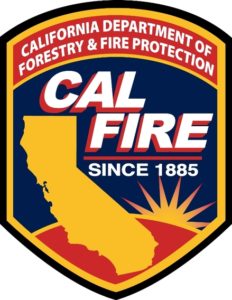 PREPARING CALIFORNIA. You might have noticed a regular flow of Cal Fire, National Guard trucks and personnel driving along Rancho San Carlos Road recently. In March, Governor Newsom declared a State of Emergency to address the high fire risk across California. The program consists of 35 large scale fuel management projects, one of which is along The Preserve’s western border on Palo Corona-White Rock Ridge. We were reminded during the 2016 Soberanes Fire that this is a key strategic fire line. The expansive project will take place across 25 different land owners but the footprint on The Preserve will be limited to Williams Canyon, the top of San Clemente Ridge on our southern border and a portion of our boundary shared with Palo Corona Regional Park. The Conservancy will be working closely with Cal Fire, the Community Services District, Ranch Club and our neighbors to support this project in ways that protect the community, minimizes disruption and safeguards the protected values of Preserve lands. Prescriptions for the fuel management aim to “simulate fire” by removing smaller and dead plant materials that would normally burn in a healthy and natural fire regime. This practice has been proven to reduce the intensity of wildfires while improving the overall health of forest habitats. We will continue to keep the community updated on this ambitious program. If you have any questions or concerns, please contact Dr. Christy Wyckoff at [email protected].
PREPARING CALIFORNIA. You might have noticed a regular flow of Cal Fire, National Guard trucks and personnel driving along Rancho San Carlos Road recently. In March, Governor Newsom declared a State of Emergency to address the high fire risk across California. The program consists of 35 large scale fuel management projects, one of which is along The Preserve’s western border on Palo Corona-White Rock Ridge. We were reminded during the 2016 Soberanes Fire that this is a key strategic fire line. The expansive project will take place across 25 different land owners but the footprint on The Preserve will be limited to Williams Canyon, the top of San Clemente Ridge on our southern border and a portion of our boundary shared with Palo Corona Regional Park. The Conservancy will be working closely with Cal Fire, the Community Services District, Ranch Club and our neighbors to support this project in ways that protect the community, minimizes disruption and safeguards the protected values of Preserve lands. Prescriptions for the fuel management aim to “simulate fire” by removing smaller and dead plant materials that would normally burn in a healthy and natural fire regime. This practice has been proven to reduce the intensity of wildfires while improving the overall health of forest habitats. We will continue to keep the community updated on this ambitious program. If you have any questions or concerns, please contact Dr. Christy Wyckoff at [email protected].
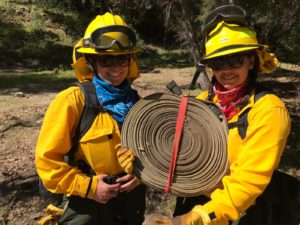 FIRE TRAINING. While the state is preparing for wildfires, the Conservancy has been doing the same. Recently Christy Fischer, Lindsay Cope and Jenna Allred completed their Wildland Firefighter course at Tassajara. In total, six of the Conservancy’s seven full-time staff are now certified as Type 2 Firefighters, contributing to The Preserve’s multi-faceted fuel management and fire safety tool kit. The five-day academy included training in fire behavior, incident command structure and communications, fuel break construction, hazard tree assessment, prescribed fire management and two days of live fire practice.
FIRE TRAINING. While the state is preparing for wildfires, the Conservancy has been doing the same. Recently Christy Fischer, Lindsay Cope and Jenna Allred completed their Wildland Firefighter course at Tassajara. In total, six of the Conservancy’s seven full-time staff are now certified as Type 2 Firefighters, contributing to The Preserve’s multi-faceted fuel management and fire safety tool kit. The five-day academy included training in fire behavior, incident command structure and communications, fuel break construction, hazard tree assessment, prescribed fire management and two days of live fire practice.
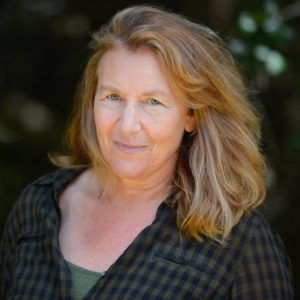 WELCOMING SUSAN GILES. Susan Giles brings over 20 years of environmental marketing and business experience to her role as the Conservancy’s Interim Business Manager. In her short time with us, she is already helping the Conservancy run like a healthy and efficient ecosystem. In her spare time, Susan combats climate crisis through her advocacy work and also enjoys spending time in the kitchen, cooking and canning the fruits of the season.
WELCOMING SUSAN GILES. Susan Giles brings over 20 years of environmental marketing and business experience to her role as the Conservancy’s Interim Business Manager. In her short time with us, she is already helping the Conservancy run like a healthy and efficient ecosystem. In her spare time, Susan combats climate crisis through her advocacy work and also enjoys spending time in the kitchen, cooking and canning the fruits of the season.
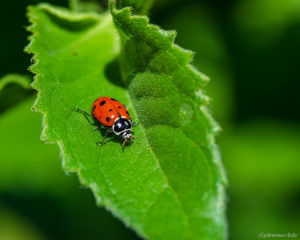 WILDLIFE FAQ
WILDLIFE FAQ
Is a fawn resting on your lawn? Is a bird in shock after striking a window? Did you come across an animal carcass on a hike? Living within a preserve means we are likely to encounter wildlife more frequently than in urban areas. The Conservancy has answered these questions and more in the FAQ section of its website, should you encounter our wild neighbors in their natural habitat or yours.
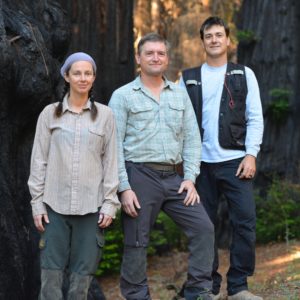 FIELD TRIPS WITH RESEARCH COLLABORATORS.
FIELD TRIPS WITH RESEARCH COLLABORATORS.
Throughout the year the Conservancy visits and hosts a variety of research and practitioner colleagues to share ideas and provide guidance, as well as professional enrichment and development for the team. In January we visited Portola Valley Ranch, a landowner managed community committed to protecting shared natural resources. This spring, we’ve hosted several renowned researchers and scientists, including Sasha Nikoaeva from University of California Berkeley, Steve Sillett from Humboldt State, Wendy Shackwitz from Chirp Consulting, Bob Crabtree from Yellowstone Ecological Research Center and David Toledo from the Agricultural Research Service, the U.S. Department of Agriculture’s chief scientific in-house research agency.
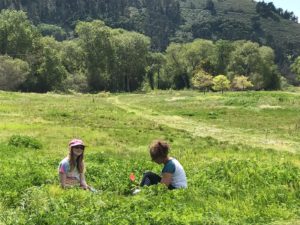 PLANTING SEEDS FOR FUTURE GENERATIONS. Volunteers from our local Girl Scout chapter helped us plant 50 plants at our new Rancho Canada education facility in the early spring. The plants included pink-flowered and golden-flowered currants, lobelias and mimulus, elderberry, dogwood and many more native species. The Scouts logged over a hundred volunteer hours creating a native pollinator garden and outdoor classroom, earning a “Silver Award” – the second highest award of the Girl Scouts of the USA – and the highest award that a Girl Scout Cadette (grades 6-8) can earn.
PLANTING SEEDS FOR FUTURE GENERATIONS. Volunteers from our local Girl Scout chapter helped us plant 50 plants at our new Rancho Canada education facility in the early spring. The plants included pink-flowered and golden-flowered currants, lobelias and mimulus, elderberry, dogwood and many more native species. The Scouts logged over a hundred volunteer hours creating a native pollinator garden and outdoor classroom, earning a “Silver Award” – the second highest award of the Girl Scouts of the USA – and the highest award that a Girl Scout Cadette (grades 6-8) can earn.
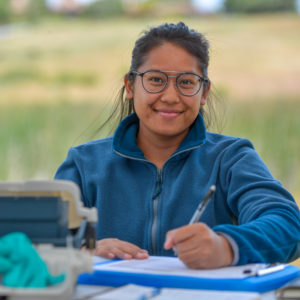 SUMMER INTERNS. Please help us welcome our first three of six summer interns, Alicia Khuon, Natalie Shuman and Madison Ono. They are working under Dr. Christy’s supervision and across a variety of Conservancy research projects.
SUMMER INTERNS. Please help us welcome our first three of six summer interns, Alicia Khuon, Natalie Shuman and Madison Ono. They are working under Dr. Christy’s supervision and across a variety of Conservancy research projects.
A transfer student from Stockton, Alicia Khuon, is pursuing a degree in Environmental Studies with a concentration in Applied Ecology at California State University Monterey (CSUMB). She will be studying the acoustics of tricolored blackbirds at two different sites and helping the Conservancy band birds. Alicia is grateful for the opportunity to expand her worth, social and educational ethics through this internship.
Natalie Shuman grew up in Davis, California and this May graduated from California State University Monterey Bay with her undergraduate degree in Environmental Studies. Natalie is the swiss army knife of the interns this summer, helping with whatever projects need the extra hands. Lately she has been checking the owl and kestrel nest boxes, assisting with pond sampling and bird banding. She is excited to continue working with the Conservancy throughout the summer and is relishing the amazing views and wildlife the Preserve has to offer.
Madison Ono hails from Huntington Beach and is currently studying at CSUMB, working toward a bachelor’s degree in Environmental Science, Technology and Policy with a concentration in Ecology. She will be working with Rodrigo and the conservation grazing team continuing research that assesses how cattle grazing is affecting the Preserve’s grasslands’ plants. Madison is excited to find what the data reveals, while spending more time on The Preserve and hanging out with the super cool Conservancy team.
 REDWOOD TREES LIBERATED. The Conservancy’s new seasonal field crew, dubbed ‘Weed Warriors’, are literally killing it this spring. The five crew members are killing invasive weeds across The Preserve, one brushy nemesis at a time. Here’s is a before and after photo of a liberated redwood along Rancho San Carlos Road. In their 3 months here, the crew has managed 350 acres and treated 150 acres of invasive weeds throughout The Preserve’s grasslands.
REDWOOD TREES LIBERATED. The Conservancy’s new seasonal field crew, dubbed ‘Weed Warriors’, are literally killing it this spring. The five crew members are killing invasive weeds across The Preserve, one brushy nemesis at a time. Here’s is a before and after photo of a liberated redwood along Rancho San Carlos Road. In their 3 months here, the crew has managed 350 acres and treated 150 acres of invasive weeds throughout The Preserve’s grasslands.
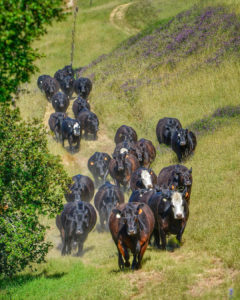 CATTLE DRIVE. Leslie Dorrance and the cattle team moved the herd from lot five to Rancho San Carlos Ridge Field in early May, where they will continue to give natives a fighting chance. This was Rue’s first big cattle drive with the team, but you wouldn’t have known it. The border collie gently and efficiently kept the herd together as they moved into the new pasture.
CATTLE DRIVE. Leslie Dorrance and the cattle team moved the herd from lot five to Rancho San Carlos Ridge Field in early May, where they will continue to give natives a fighting chance. This was Rue’s first big cattle drive with the team, but you wouldn’t have known it. The border collie gently and efficiently kept the herd together as they moved into the new pasture.
GET INVOLVED
Highlights from Recent Events
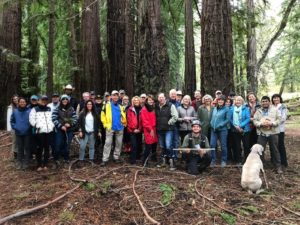 SAUNTER TO THE REDWOODS
SAUNTER TO THE REDWOODS
We scaled new heights together on a science expedition to our beloved redwoods tucked into the Arroyo Sequoia neighborhood in late March. As one of our best attended outings, over 30 community members joined to watch tree climbing scientist Steve Sillett and his team from Humboldt State University in action. The arborists collected measurements and samples to better understand a “very special grove as an eastern outlier.” Read what else Professor Sillett shared in his research paper from his 2018 visit when his team measured two of The Preserve’s tallest redwoods, amongst the top 100 tallest in the world, in Trappers Loop.
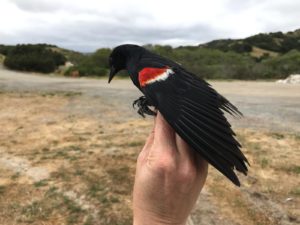 TRICOLORED BANDING
TRICOLORED BANDING
Early-May kicked off the Conservancy’s eighth year of tricolored blackbirds (“trikes”) banding! Several members of the community helped us band and release trikes. Findings from this long-term research has contributed to a variety of collaborative studies and publications that are improving our understanding of this threatened species and will inform statewide conservation efforts. Let us know if you see any of these beauties around, especially if they have leg bands on.
EARTH DAY RESTORATION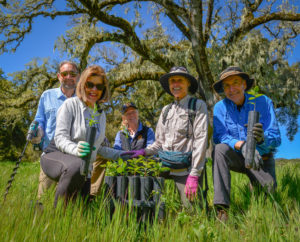
Preserve landowners celebrated Earth Day by getting outside and giving some of California’s iconic trees a helping hand on April 22. Valley oaks are unique to California and have been cleared from ninety percent of their home range. The community collected precious valley oak acorns last fall and this year our conservation community carefully planted the seedlings.
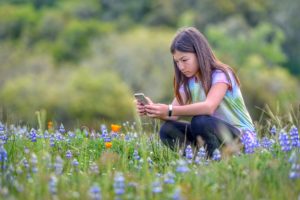 WILDFLOWER QUEST
WILDFLOWER QUEST
A wet winter combined with a few weeks of sunshine created a wildflower bonanza on The Preserve! The green hills turned orange with poppies, fuchsia with shooting stars, purple with sky lupines and yellow with California buttercups. Best of all, community members of all ages joined us in force to explore and identify these species with our beloved wildflower specialist Dr. Rod Yeager.
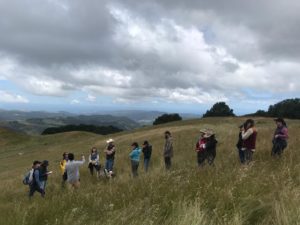 GOT GRASS?
GOT GRASS?
Our Stewardship Director, Rodrigo Sierra Corona, recently led a fantastic outing on Peñon Peak to share the exciting shift we are seeing in our grasslands. In areas where we have applied targeted grazing, we are seeing increases in native species and decreases in thistles! The following day Rodrigo shared how his conservation grazing findings from the past half-decade builds upon the new Grasslands Initiative and how the Conservancy will graze more areas with greater precision over the next three years.
UPCOMING EVENTS: SAVE THE DATE
June 21: Sunshine, Seining and Salamanders
July 12: Extreme Gardening, Yellow Starthistle
August 29: Wild Preserve
For the Conservancy’s full calendar of events, please visit our Member Events page.
UNTIL WE MEET AGAIN
We hope you enjoyed the second edition of the Conservancy newsletter. The next edition will be out in a couple of months. Until then, stay updated on Conservancy news through any of our social media channels, website, events listed above, and by participating in any one of several citizen science programs.
The non-profit Santa Lucia Conservancy envisions a place of enduring wild beauty and resilient biodiversity, actively cared for and protected by a thriving community of people for the benefit of all. If ever you have a question or need assistance, we hope you get in touch. Please feel free to stop by the Conservancy office to connect or simply say “Hello” at any time.
© 2019 Santa Lucia Conservancy
26700 Rancho San Carlos Rd.

